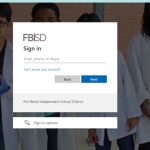As educators, our primary objective is to foster deep understanding and meaningful learning experiences for our students. This involves enabling learners to reason, explain phenomena, connect theory with experimentation, and relate new concepts to their existing knowledge. Here we are giving the information on effective ways to help students deepen their understanding, make connections between new concepts and prior knowledge, and actively engage with the learning process through constructivist teaching strategies.
Constructing Knowledge
Before diving into specific teaching strategies, it is crucial to understand the central principle of constructivism. In a constructivist approach to learning, students actively build their own understanding by connecting various concepts and identifying the relationships between them. This active engagement with the content is both “hands-on” and “minds-on,” allowing learners to construct their understanding while participating in learning activities.
Also Read: Fostering Inclusive Classrooms through Culturally Responsive Teaching
Teaching Strategies for Deepening Understanding
Utilizing Concept Maps and Diagrams
Concept maps and diagrams are powerful tools for visualizing and representing complex relationships between key concepts. Encouraging students to create these maps helps them identify how different concepts are interrelated within a system. This method enables learners to make arguments using visual representations and gain a deeper understanding of the subject matter.
Real-Life Scenarios and Simulations
Bringing real-life scenarios into the classroom or utilizing simulations can be highly effective. These activities allow students to apply theoretical knowledge to practical situations, fostering a deeper understanding of how concepts work in the real world. For example, showing movies, animations, or using “what-if” scenarios can engage students’ critical thinking and problem-solving skills.
Hands-On Learning Activities
Engaging students in hands-on activities, such as mini-experiments and group discussions, encourages active participation and helps them connect theory to practice. These activities also promote debate and critical thinking as students engage in discussions and problem-solving tasks.
Multiple Exposure to Concepts
Presenting the same concept through various mediums, such as explanations, videos, and problem-solving exercises, reinforces student’s understanding. This approach caters to different learning styles and allows learners to grasp the material from multiple angles.
Implementing Constructivist Principles in E-Learning
Constructivist teaching strategies are not limited to traditional classrooms. They can be effectively applied in e-learning environments by providing opportunities for students to interact with complex phenomena or real-world scenarios. Simulations, in particular, play a crucial role in facilitating understanding by allowing learners to manipulate variables, identify relationships, and represent their findings through diagrams and text.
Also Read: Exploring Interactive Online Learning Tools in Modern Education
Interactive Features and Collaborative Learning
Interactive elements within e-learning content, like simulations with adjustable variables, empower students to explore “what if” scenarios. These features are complemented by learning activities that require students to explain their observations, create graphs, and engage actively with the simulation.
Collaborative activities around simulations encourage social construction of knowledge, as students learn from their peers, engage in debates, articulate their ideas, and broaden their understanding through negotiation and discussion.
Using Simulation Repositories
Various simulation repositories are available, covering a wide range of topics. Prominent repositories like PhET, NetLogo, and Concord Consortium offer empirically tested simulations. Educators can integrate these simulations into their e-learning content, creating opportunities for students to interact with dynamic learning materials.
Creating Concept Maps and Causal Maps
Incorporating tools like Cmap, Visual Paradigm, or Loopy allows students to create their own concept maps or causal maps, representing complex phenomena graphically. These activities encourage learners to analyze relationships between key concepts and promote a deeper understanding of the subject matter.
Also Read: Schoology FBISD: Getting Started with Schoology FBISD Login
Conclusion
As educators, our role extends beyond delivering information; it involves facilitating meaningful learning experiences. Constructivist teaching strategies empower students to construct their understanding actively, connect concepts, and engage deeply with the content.
Whether in traditional classrooms or e-learning environments, these strategies enable students to develop a profound grasp of the subject matter and apply their knowledge effectively. Embracing constructivism in education ultimately fosters independent, critical thinkers who can navigate the complexities of the modern world.

We are the founders of Techspurblog and we have been in this industry for over Four years. We pride ourselves on being the global leader in developing Technology Blog, which can create original content.
We are a team of enthusiastic people who want to share our experience, knowledge and enterprise with the world. We love what we do and we hope you will too!





